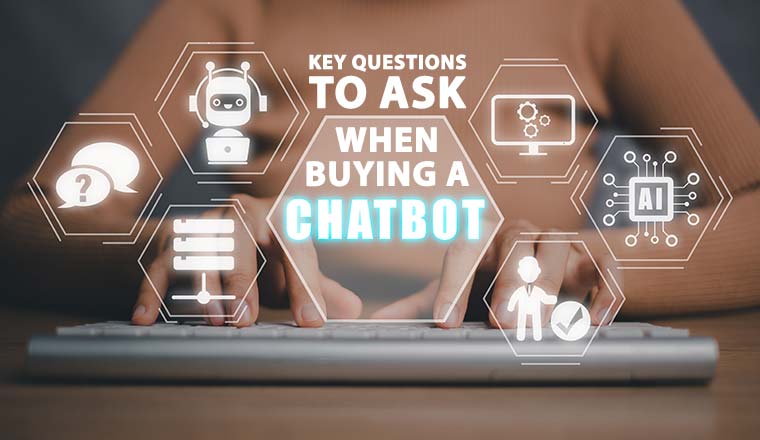26th February 2024

A good chatbot solution can support business goals, boost overall efficiency, and improve the customer experience, but how do you sort the best from the rest?
To find out what contact centre managers should look for when buying a chatbot, we spoke to our panel of experts about the best questions to ask.
So here are 9 questions every contact centre leader should ask before buying a chatbot:

When generative AI is infused with purpose-built AI for CX to build a chatbot, it allows for the chatbot to respond with accurate and brand-aligned answers in a conversational tone.
We have got to a point where, thanks to AI, it is becoming increasingly difficult to discern whether you are speaking to a chatbot or a human agent.
This is the level of service that CX leaders should strive to provide, and it’s possible with today’s CX technology.
Contributed by: Elizabeth Tobey, Head of Marketing Digital Solutions, NICE

Look for advanced AI capabilities that enable fluid customer experiences.
Seek simplicity in development with a single, cloud-based platform for easy deployment across various channels.
Additionally, seamless hand-offs to live agents, pre-built templates, and the integration of authentic human voices enhance the user experience.
Contributed by: Sabine Winterkamp, Vice President, International Marketing, Five9
Prioritize easy maintenance and update processes to ensure it’s not a strain on the contact centre to maintain.
Analytics are essential; choose a chatbot that provides valuable insights so that leaders can assess performance and make informed decisions that drive continuous improvement.
Contributed by: Ben Booth, CEO, MaxContact

Generative AI is powerful – but if you’re putting it in direct contact with your customers, take care!
The first reason is obvious: unsupervised generative AIs can cause problems. (Ask DPD, whose chatbot wrote a poem about how bad DPD services are!)
The second reason is that generative systems have no real memory and cannot maintain the context of the conversation.
Good chatbots are trained on a specific data set. They can refer to:
Crucially, they act as expected given what happened so far in the dialogue.
In other words, a conventional chatbot handles interactions like your veteran agents. If you use generative AI, the circumstances should be more controlled.
There’s a reason why most winning use cases for AI in CX are in employee-facing situations. The blast radius is a lot smaller.
Contributed by: Pierce Buckley, CEO & Co-Founder, babelforce.
Not all chatbots are created equal: the technology, and how it integrates into your workflows, can make or break a chatbot’s success.
That’s why it is so important for contact centre managers to do their research before implementation.
Contributed by: Elizabeth Tobey, Head of Marketing Digital Solutions, NICE

Opt for a chatbot equipped with natural language processing capabilities, enhancing its ability to understand and respond effectively to customer issues.
Think long-term and select a chatbot that is customizable and scalable so that it can adapt to evolving business needs.
Contributed by: Ben Booth, CEO, MaxContact

If the main use cases in your organization are very simple sequential tasks, you need to ask the question, do I need an AI bot for that?
Menu or rules-based bots may be much more effective at steering customers to resolution. It’s more convenient to press a button than type a full response (especially on a smartphone), and convenience is the entire point!
If the query the customer is trying to resolve is not covered in the options, then they can escalate to an agent with minimal time wasted.
Contributed by: Richard Gregory, Senior Sales Executive at Odigo
If you are looking for information on chatbots, read these articles next:
Alternatively, for more great insights and advice from our panel of experts, read these articles next:
Reviewed by: Hannah Swankie